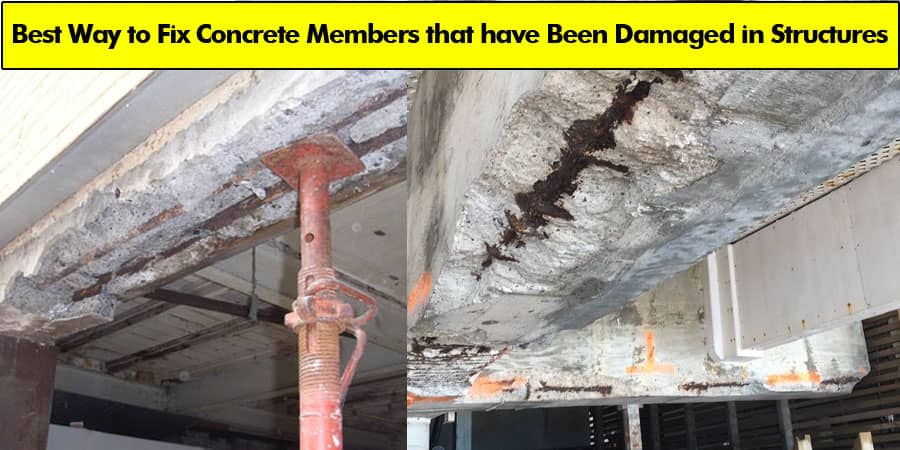Best Way to Fix Concrete Members that have Been Damaged in Structures

Introduction
Concrete is one of the most durable and reliable building materials used in construction. However, over time, concrete members can become damaged due to various factors such as weather, wear and tear, and improper installation. When concrete members become damaged, they can compromise the stability and safety of the structure. Therefore, it is essential to repair and fix any damaged concrete members as soon as possible. In this article, we will discuss the best ways to fix concrete members that have been damaged in structures.
Best Ways to Fix Concrete Members that have Been Damaged in Structures:
Identify the Cause of Damage
Before fixing any damaged concrete member, it is essential to identify the root cause of the damage. Some common causes of concrete damage include weather exposure, chemical exposure, physical damage, and structural overload. Once you have identified the cause of damage, you can take appropriate measures to prevent the same damage from occurring in the future.
Clean and Prepare the Surface
Before repairing any damaged concrete member, it is crucial to clean and prepare the surface. This involves removing any loose or damaged concrete, dust, debris, and contaminants from the surface. You can use a wire brush, chisel, or grinder to clean the surface thoroughly. Once the surface is clean, you can apply a concrete cleaner or etching solution to prepare the surface for repair.
Use the Right Repair Method
The most effective way to fix a damaged concrete member depends on the extent and type of damage. Some common repair methods include:
- Epoxy Injection: This method is ideal for repairing cracks in concrete members. It involves injecting an epoxy resin into the crack to fill and seal it.
- Concrete Overlay: This method is used to repair spalled or damaged concrete surfaces. It involves applying a new layer of concrete over the damaged surface.
- Concrete Replacement: This method is used when the concrete member is severely damaged or structurally unsound. It involves removing the damaged concrete and replacing it with a new one.
Use Quality Materials and Tools
To ensure a lasting repair, it is crucial to use high-quality materials and tools. Some essential tools for concrete repair include chisels, grinders, mixers, trowels, and sprayers. You should also use high-quality concrete mixes, epoxies, and sealants that are designed for the specific repair job.
FAQs
Can I repair concrete members myself?
It is possible to repair small cracks or spalls in concrete members yourself using DIY repair kits. However, for more significant damage, it is recommended to hire a professional contractor.
How long does it take to repair a damaged concrete member?
The time it takes to repair a damaged concrete member depends on the extent of damage and the repair method used. Epoxy injections and concrete overlays typically take a few hours to complete, while concrete replacement can take several days.
Conclusion
In conclusion, the best way to fix concrete members that have been damaged in structures is to identify the root cause of the damage, clean and prepare the surface, use the right repair method, and use high-quality materials and tools. By following these steps, you can ensure a lasting and effective repair that will restore the stability and safety of the structure. Remember, if you are unsure about how to repair a damaged concrete member, it is always best to consult a professional contractor.
